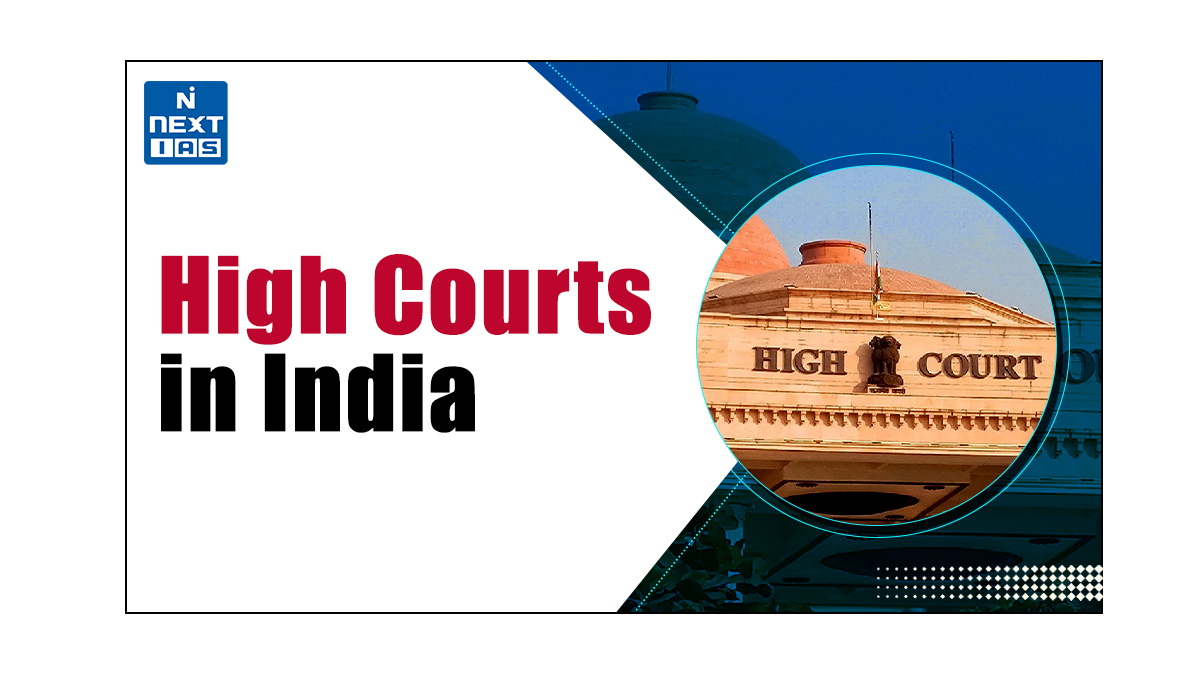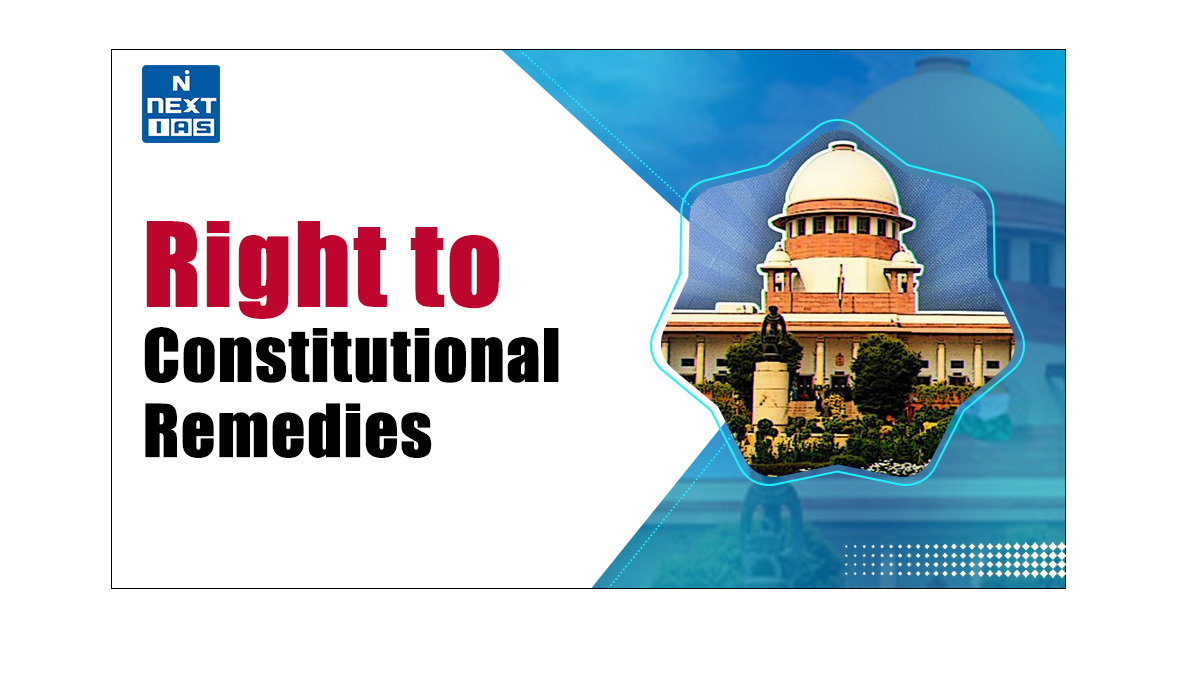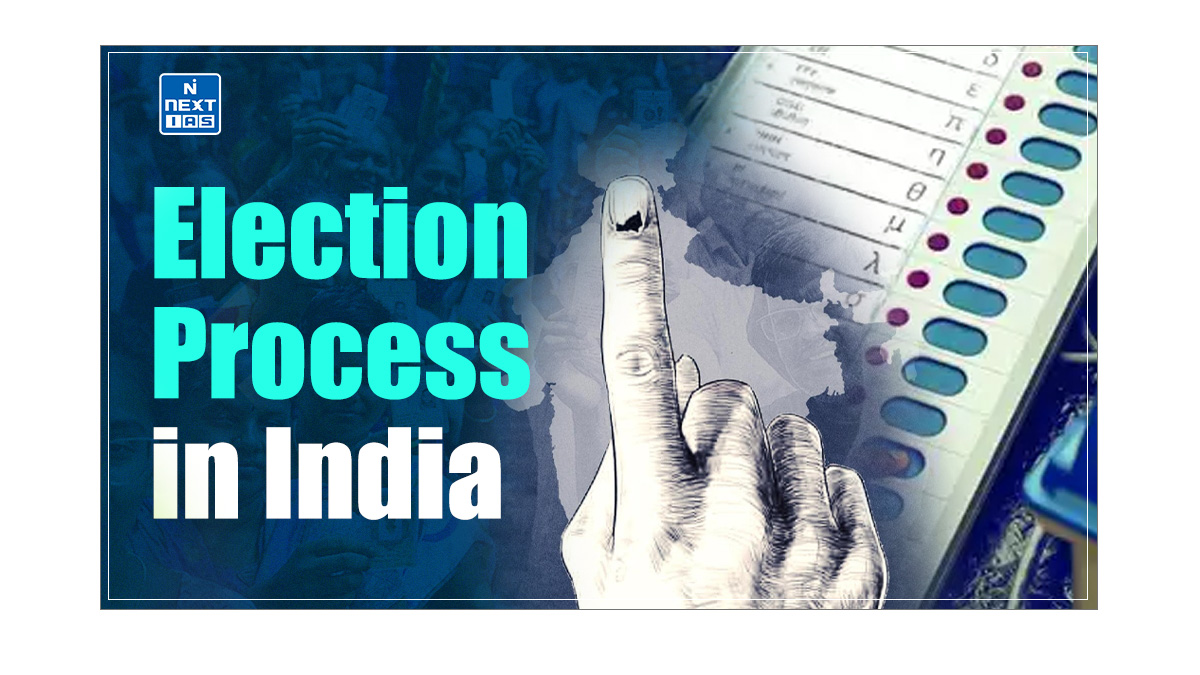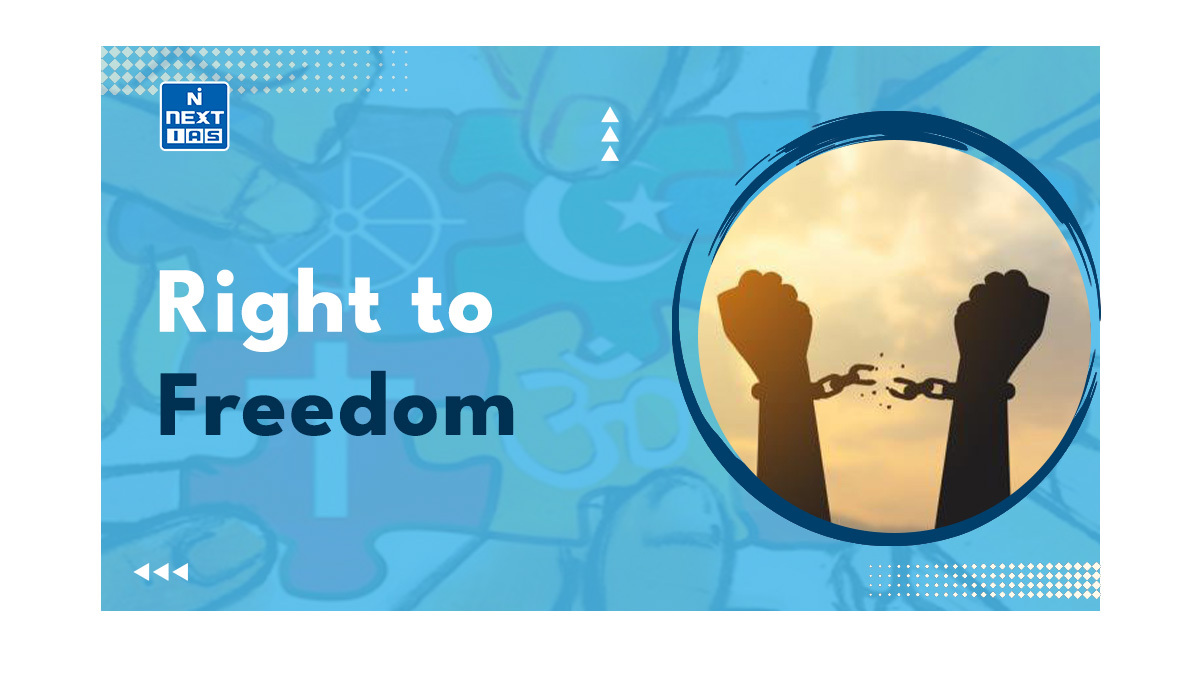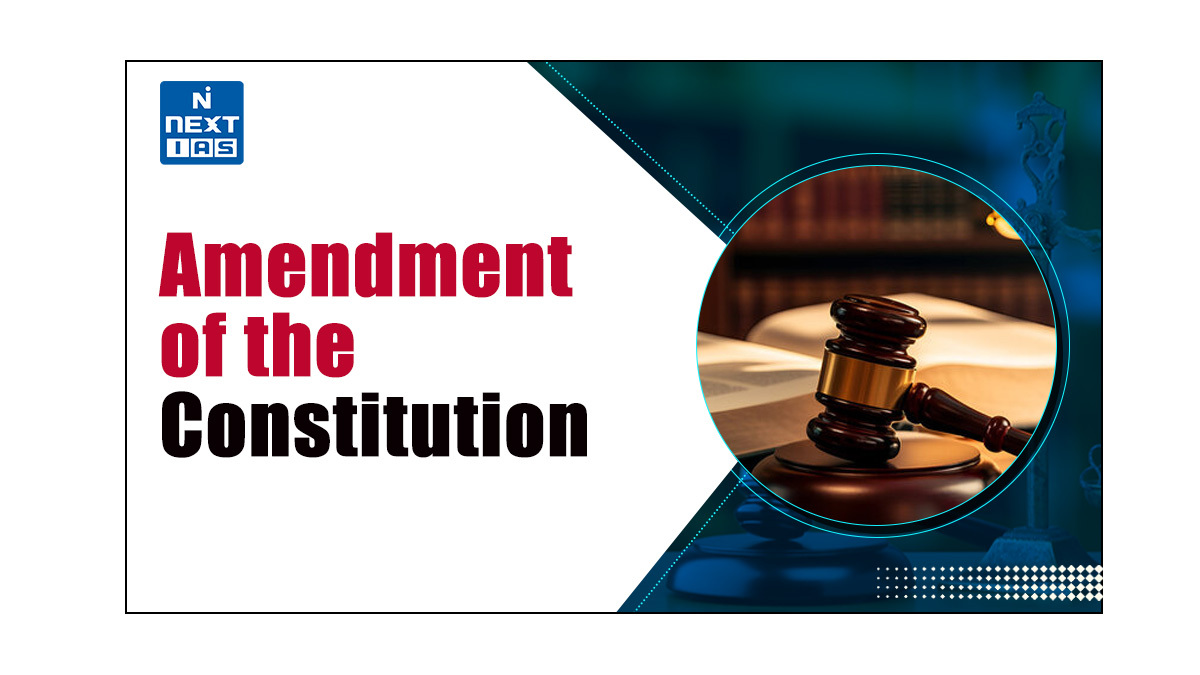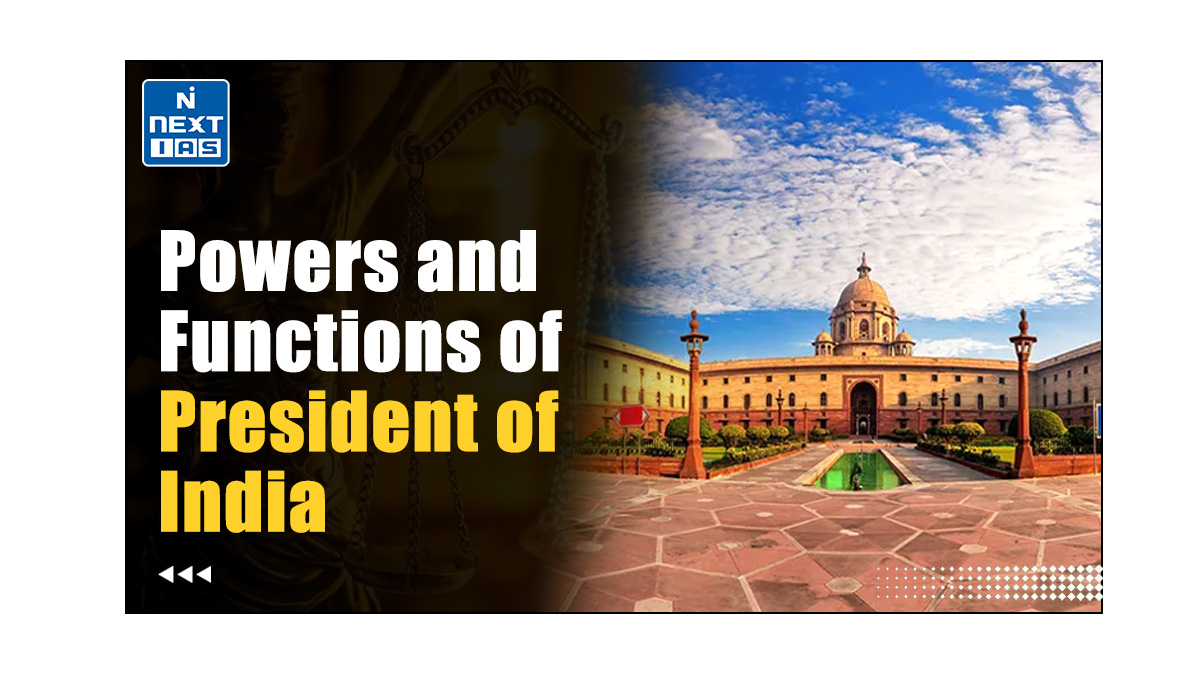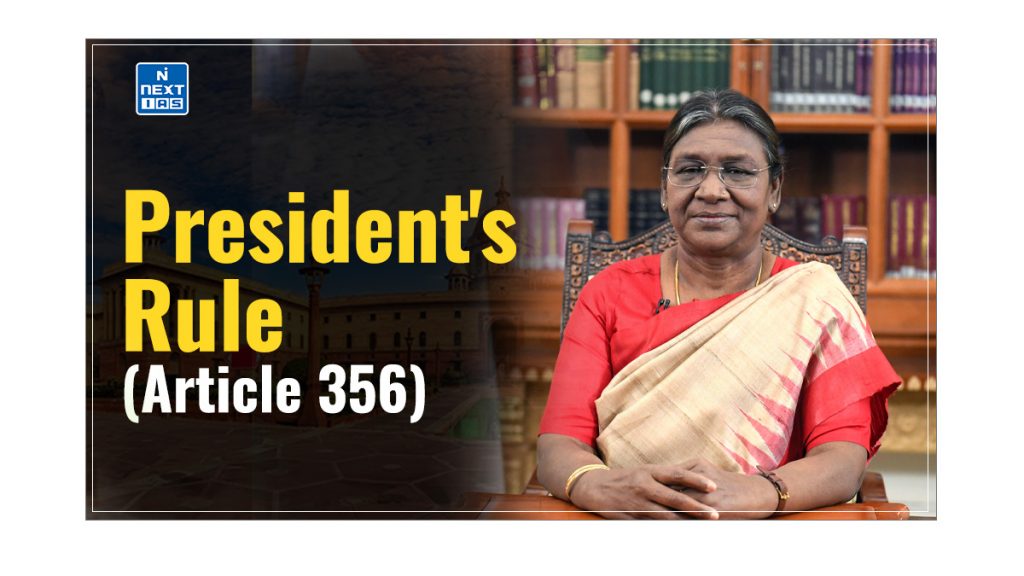
President Rule (Article 356) in a State, as one of the three types of emergencies provided for by the Indian Constitution, remains a crucial tool in the hands of the Central Government to address any constitutional breakdown or failure of governance at the State level. Though not bereft of criticisms, it is largely seen as an important mechanism to uphold the constitutional order, ensure the continuity of governance, and protect the interests of the citizens when the State government is unable to function according to the constitutional framework.
This article of Next IAS aims to study in detail the President Rule (Article 356), its meaning, constitutional provisions, grounds of declaration, process of parliamentary approval, revocation, significance, and other related aspects.
Meaning of President’s Rule
- The President’s Rule (Article 356), also known as the Governor’s Rule, refers to a period when the constitutional machinery in a State has failed, and the State government is unable to function in accordance with the provisions of the Constitution.
- It is a period when the autonomy of the State Government is temporarily suspended, and the Central government assumes direct control over the State’s administration.
- The President’s Rule is also known as ‘Constitutional Emergency’ or ‘State Emergency’.
- However, the Indian Constitution does not use the word “Emergency” for this situation.
- The imposition of the President’s Rule empowers the Central government to suspend the State Legislature and govern the State through the office of the Governor.
- This centralization of authority is intended to restore constitutional order, ensure the continuity of governance, and protect the interests of the citizens when the regular State machinery is unable to function.
Constitutional Provisions Related to President’s Rule
Article 355 to Article 357 in Part XVIII and Article 365 in Part XIX of the Indian Constitution are related to the President’s Rule. These articles and their subject matters can be seen in the table below.
| Articles | Subject – Matter |
|---|---|
| Article 355 | Duty of the Union to protect States against external aggression and internal disturbance |
| Article 356 | Provisions in case of failure of Constitutional Machinery in States |
| Article 357 | Exercise of legislative powers under proclamation issued under Article 356 |
| Article 365 | Effect of failure to comply with, or to give effect to, directions given by the Union. |
Grounds of Imposition of President’s Rule
- As per Article 355, the Indian Constitution imposes a duty on the Centre to protect every State against external aggression and internal disturbance and to ensure that the government of every State is carried on in accordance with the provisions of the Constitution.
- It is this duty in the performance of which the Centre takes over the government of a State under Article 356 in case of failure of Constitutional Machinery in the State.
- The President’s Rule can be proclaimed under Article 356 on two grounds:
- Provisions under Article 356, and
- Provisions under Article 365.
The two provisions, Article 365 and Article 356, are discussed in detail below.
Article 356 of Indian Constitution
- As per Article 356 of Indian Constitution, the President can proclaim President’s Rule in a state, if he/she is satisfied that a situation has arisen in which the government of a State cannot be carried on in accordance with the provisions of the Constitution.
- The President can act either on a report of the Governor of the State or even without the Governor’s report.
Article 365 of Indian Constitution
- As per Article 365 of the Indian Constitution, whenever a State fails to comply with or to give effect to any direction from the Center, it will be lawful for the President to hold that a situation has arisen in which the government of the State cannot be carried on in accordance with the provisions of the Constitution.
Parliamentary Approval of President’s Rule
- A proclamation imposing the President’s Rule must be approved by both Houses of Parliament within two months from the date of its issue.
- If the proclamation of President’s Rule is issued at a time when the Lok Sabha has been dissolved or the dissolution of Lok Sabha takes place during the period of two months without approving the proclamation, then the proclamation survives until 30 days from the first sitting of the newly constituted Lok Sabha, provided Rajya Sabha approves it in the mean time.
Duration of President’s Rule
- If approved by both Houses of Parliament, the President’s Rule continues for the period of six months.
- President rule can be imposed for a maximum period of three years with the approval of Parliament every six months.
- If the dissolution of the Lok Sabha takes place during the period of six months without approving the further continuation of the President’s Rule, then the proclamation survives until 30 days from the first sitting of the Lok Sabha after its reconstitution, provided the Rajya Sabha has in the mean time approved its continuance.
- The 44th Constitutional Amendment Act of 1978 added a new provision that the President’s Rule can be extended beyond one year, by six months at a time, only when the following two conditions are fulfilled:
- The proclamation of National Emergency is in operation in the whole of India or in the whole or any part of the State.
- The Election Commission of India (ECI) certifies that general elections to the Legislative Assembly of the State cannot be held on account of certain difficulties.
| Every resolution approving the proclamation of the President’s Rule or its continuation should be passed by either House of Parliament only by a Simple Majority i.e. 50 per cent of the members present and voting in the House. |
Revocation of President Rule
- A Proclamation of Emergency can be revoked by the President at any time by a subsequent proclamation.
- Such a proclamation does not require parliamentary approval.
Consequences of President’s Rule
When the President’s Rule is in operation, the President acquires the following extra-ordinary powers w.r.t. the concerned state:
- The President can take up the functions of State Government and powers vested in the Governor or any other executive authority in the State.
- The President can declare that the powers of the State Legislature are to be exercised by Parliament.
- The President can take all other necessary steps including the suspension of the constitutional provisions relating to any body or authority in the State.
Accordingly, the consequences and effects of President’s Rule in a state can be studied in detail under the following thress heads.
Effects of President’s Rule on State Executive
- When the President’s Rule is imposed in the State, the President dismisses the State Council of Ministers (CoM) headed by the Chief Minister.
- The State Governor, on behalf of the President, carries on the State administration with the help of the Chief Secretary of the State or the advisors appointed by the President.
- In fact, this is the reason why a proclamation under Article 356 is popularly known as the imposition of ‘President’s Rule’ in a state.
Effects of President’s Rule on State Legislature
- The President either suspends or dissolves the State Legislative Assembly.
- The Parliament passes the State Legislative Bills and the State Budget.
- The President can promulgate ordinances for the State when the Parliament is not in session.
- When the State Legislature is dissolved or suspended, the Parliament acquires certain powers:
- The Parliament can delegate the power to make laws for the State to the President or any other authority specified by him in this regard.
- The Parliament or in case of delegation, the President or any other specified authority can make laws conferring powers and imposing duties on the Center or its officers and authorities.
- The President can authorize, when Lok Sabha is not in session, expenditure from the Consolidated Fund of the State pending its sanction by the Parliament.
- A law made by Parliament or the President or any other specified authority continues to be operative even after the President’s Rule.
- This means that the period for such a law remains in force is not co-terminus with the duration of the proclamation.
- But, such law can be repealed, altered, or re-enacted by the State Legislature.
Effects of President’s Rule on State Judiciary
- During the Proclamation of the President’s Rule, the President can neither assume the powers of the High Court onto himself nor suspend the provisions of the Constitution relating to the High Court.
- Thus, the constitutional position, status, powers, and functions of the concerned State High Court remain the same even during the President’s Rule.
Misuse of President’s Rule (Article 356)
- Article 356 has been one of the most controversial and most criticised provisions of the Indian Constitution.
- Since 1950, the President’s Rule has been imposed on more than 125 occasions.
- On several occasions, the President’s Rule has been imposed arbitrarily for political or personal reasons.
- By now, almost all the states have been brought under the President’s Rule, once or twice or more.
- Dr. B.R. Ambedkar had hoped that the drastic power under Article 356 would remain a dead letter and would be used only as a measure of last resort.
- However, as H.V. Kamath observes, Dr. Ambedkar is dead and Article 356 is very much alive.
Scope of Judicial Review of President’s Rule
38th Constitutional Amendment Act of 1975
- The 38th Constitutional Amendment Act, 1975 made the satisfaction of the President in invoking Article 356 final and conclusive which could not be challenged in any court on any ground
- Thus, it made the proclamation of the President’s Rule immune from Judicial Review.
44th Constitutional Amendment Act of 1978
- The 44th Constitutional Amendment Act deleted the above provision of the 38th Constitutional Amendment Act, 1975.
- Thus, it provided that the satisfaction of the President for the proclamation of the President’s Rule is not beyond judicial review.
S.R. Bommai vs. Union of India Case (1994)
In this case, the Supreme Court has laid down the following propositions with respect to the imposition of the President’s rule in a State under Article 356:
- The proclamation imposing the President’s Rule is subject to Judicial Review.
- The satisfaction of the President must be based on relevant material. A proclamation based on irrelevant or extraneous grounds can be struck down.
- The burden lies on the Center to prove that relevant material exists to justify the proclamation.
- The court cannot go into the correctness of the material or its adequacy, but it can see whether it is relevant or not.
- If the court holds the proclamation to be unconstitutional and invalid, it has the power to restore the dismissed State Government and revive the State Legislative Assembly.
- The State Legislative Assembly should be dissolved only after Parliament has approved the proclamation. Until such approval, the President can only suspend the assembly.
- In case, the Parliament fails to approve the proclamation, the assembly would get reactivated.
- Secularism is one of the ‘Basic Features’ of the Constitution. Hence, a State government pursuing anti-secular politics is liable to action under Article 356.
- The question of the State Government losing the confidence of the Legislative Assembly should be decided on the floor of the House and until that is done, the State CoM should not be unseated.
- Where a new political party assumes power at the Centre, it will not have the authority to dismiss governments formed by other parties in the States.
- The power under Article 356 is an exceptional power and should be used only occasionally to meet the requirements of special situations.
Cases of Proper and Improper Use of President’s Rule
Based on the reports of the Sarkaria Commission on Centre-State Relations (1988), the Supreme Court in S.R. Bommai vs Union of India Case (1994) listed the cases of proper and improper use of the provisions of President’s Rule (Article 356). The same can be seen as follows.
| Cases of Proper Use of President’s Rule | Cases of Improper Use of President’s Rule |
|---|---|
| – If the result of the assembly election is a ‘Hung Assembly’. – If the party having a majority in the Assembly declines to form a ministry and the Governor cannot find a coalition ministry in the Assembly. – If no party is willing to or able to form a government. – If the constitutional direction of the Central government is disregarded by the State government (Article 365). – If there is internal subversion, where a State government deliberately acts against the Law or the Constitution. – If there is a physical breakdown i.e. the government willfully refuses to discharge its duties and provide for governance in the State. | – If the Governor recommends the imposition of the President’s Rule without probing the possibility of forming an alternative ministry. – If the Governor makes his assessment and recommends the imposition of the President’s Rule without the floor test. – If the ruling party enjoying majority support in the assembly has suffered a massive defeat in the general elections to the Lok Sabha such as in 1977 and 1980. – If the proclamation is declared on the grounds of maladministration or allegations of corruption or stringent financial exigencies of the State. – If the State government is not given prior warning to rectify itself except in the case of extreme urgency leading to disastrous consequences. – If the power is used to sort out intra-party problems of the ruling party, or for a purpose extraneous or irrelevant to the one for which it has been conferred by the Constitution. |
Significance of President’s Rule
The significance of the President’s Rule in the Indian Constitution can be seen in the following points:
- Ensuring Continuity of Governance – The President’s Rule provides a constitutional mechanism to address situations where the State government is unable to function according to the provisions of the Constitution. This helps maintain the continuity of governance and prevent a breakdown in the administrative machinery.
- Upholding Constitutional Order – The invocation of the President’s Rule is intended to restore the constitutional order when the State government fails to adhere to the constitutional framework. It acts as a safeguard to protect the democratic foundations of the State.
- Crisis Management – The President’s Rule empowers the Central government to intervene and take direct control of the State’s administration during times of political instability, law and order issues, or other crises that prevent the State government from functioning effectively.
- Protecting National Interests – In certain situations, the President’s Rule can be used to protect the national interests, such as ensuring the unity and integrity of the country or safeguarding the security and sovereignty of India.
Criticism of President’s Rule
The provisions of the President’s Rule can be criticised on the following grounds:
- Potential for Misuse – The broad powers granted under the President’s Rule have been criticized for the potential of misuse by the ruling party at the centre to dismiss state governments controlled by opposition parties.
- Undermining Federalism – The imposition of the President’s Rule is seen as a violation of the principles of federalism, as it allows the central government to override the democratically elected State government.
- Lack of Clear Criteria – The Constitution does not provide clear and objective criteria for the imposition of the President’s Rule, leading to allegations of arbitrary and partisan use of this provision.
- Suspension of Democratic Process – The suspension of the State Legislature and the concentration of power in the hands of the Governor during the President’s Rule are viewed as a temporary setback to the democratic process.
- Tendency towards Centralization – The repeated use of the President’s Rule has been criticized for contributing to the overall trend of centralization of power at the expense of state autonomy.
- Impact on Development – The uncertainty and instability caused by the President’s Rule can adversely affect the development and progress of States, as policy decisions are delayed or halted, and long-term planning becomes difficult during the period of Central intervention.
Major Recommendations Regarding the Application of Article 356
Recommendations of Punchhi Commission
- The Punchhi Commission has proposed to localize the Emergency provisions under Articles 355 and 356, contending that localized areas – a district or parts of a district – be brought under the President’s rule instead of the whole State.
- Also, such an Emergency provision should not be of duration of more than three months.
Recommendations of Sarkaria Commission
The Sarkaria Commission did not favour the deletion of this Article. Rather, it suggested the following measures to ensure that the Centre makes use of these provisions only on rare occasions:
- Article 356 is to be used as a measure of last resort when all available alternatives fail to prevent or rectify the breakdown of the Constitutional Machinery of the State.
- This provision can be invoked only in the event of political crisis, internal subversion, physical breakdown, and non-compliance with the constitutional directives of the Centre.
- Before that, a warning should be issued to the errant State in specific terms and an alternate course of action must be explored before invoking it.
- The material fact and grounds based on which Article 356 is invoked should be made an integral part of the Proclamation, it will ensure effective Parliamentary control over the invocation of the President’s Rule in the State.
- The Governor’s report must be a ‘speaking document’ and it should be given wide publicity.
- An explanation is to be obtained from the errant State before taking action under Article 356.
- The Governor should recommend a proclamation of the President’s Rule without dissolving the Legislative Assembly.
- Appropriate amendment is carried out in the relevant provisions of the Constitution to make the remedy of judicial review more meaningful.
| Note: Based on the recommendations of the Sarkaria Commission, the Inter-State Council was established in 1990. |
Recommendations of Inter-State Council
The Inter-State Council established under Article 263 has made the following recommendations on the imposition of the President’s Rule:
- The proclamation needs to be ratified only within a month instead of two months.
- The Governor’s report should be a speaking document.
- The erring State should first be warned before imposing the President’s rule.
- A special majority should be necessary for ratification of a proposal for imposition of the President’s rule.
Recommendations of NCRWC
The National Commission to Review the Working of the Constitution made the following recommendations regarding the use of Article 356:
- Article 356 should not be deleted but it must be used sparingly and only as a remedy of the last resort and after exhausting other options like giving directives to the State concerned.
- The Governor’s report should be a “speaking document”, containing a precise and clear statement of all material facts and grounds based on which the President may make the decision.
- In the event of a political breakdown necessitating the invocation of Article 356, the concerned State should be allowed to explain its position and address the situation before issuing a proclamation thereunder, unless it compromises the security of the State or the defence of the country.
- To amend the Article 356 – in line with the Supreme Court’s judgment in S.R. Bommai vs Union of India (1994) – to ensure that the State Legislative Assembly is not dissolved before the proclamation is approved by the Parliament.
- The question of whether the Ministry has lost the confidence of the Legislative Assembly or not should be decided on the floor of the Assembly and the Centre should take the required steps if necessary for the free functioning of the Legislative Assembly.
Conclusion
The provisions for declaring a President’s Rule in a State is a double-edged sword. It provides the central government with the necessary authority to address constitutional breakdowns at the State level, but also carries the potential for abuse and the undermining of democratic principles. As India navigates evolving political dynamics, it is crucial that the President’s Rule is exercised judiciously, with robust oversight and strict adherence to the rule of law, to ensure the preservation of the country’s federal structure and democratic fabric.
Frequently Asked Questions (FAQs)
What is President’s Rule?
The President’s Rule (Article 356), also known as the Governor’s Rule, refers to a period when the constitutional machinery in a State has failed, and the State government is unable to function in accordance with the provisions of the Constitution.
When is the President’s Rule imposed in a State?
After the imposition of the President’s Rule in an Indian State, the State Legislative Assembly is either dissolved or suspended and the executive authority of the State is transferred to the Central government, which exercises its powers through the Governor of the State. The Parliament assumes legislative powers over the State, with the President able to issue ordinances when necessary.
What is the maximum duration of President’s Rule in a State?
The maximum duration of the President’s Rule continues for the period of six months. It can be extended for a maximum period of three years with the approval of Parliament every six months.
When can the President declare President’s Rule in a state?
The President can declare President’s Rule in a state under Article 356 of Indian Constitution in the case of failure of Constitutional Machinery in the state.
